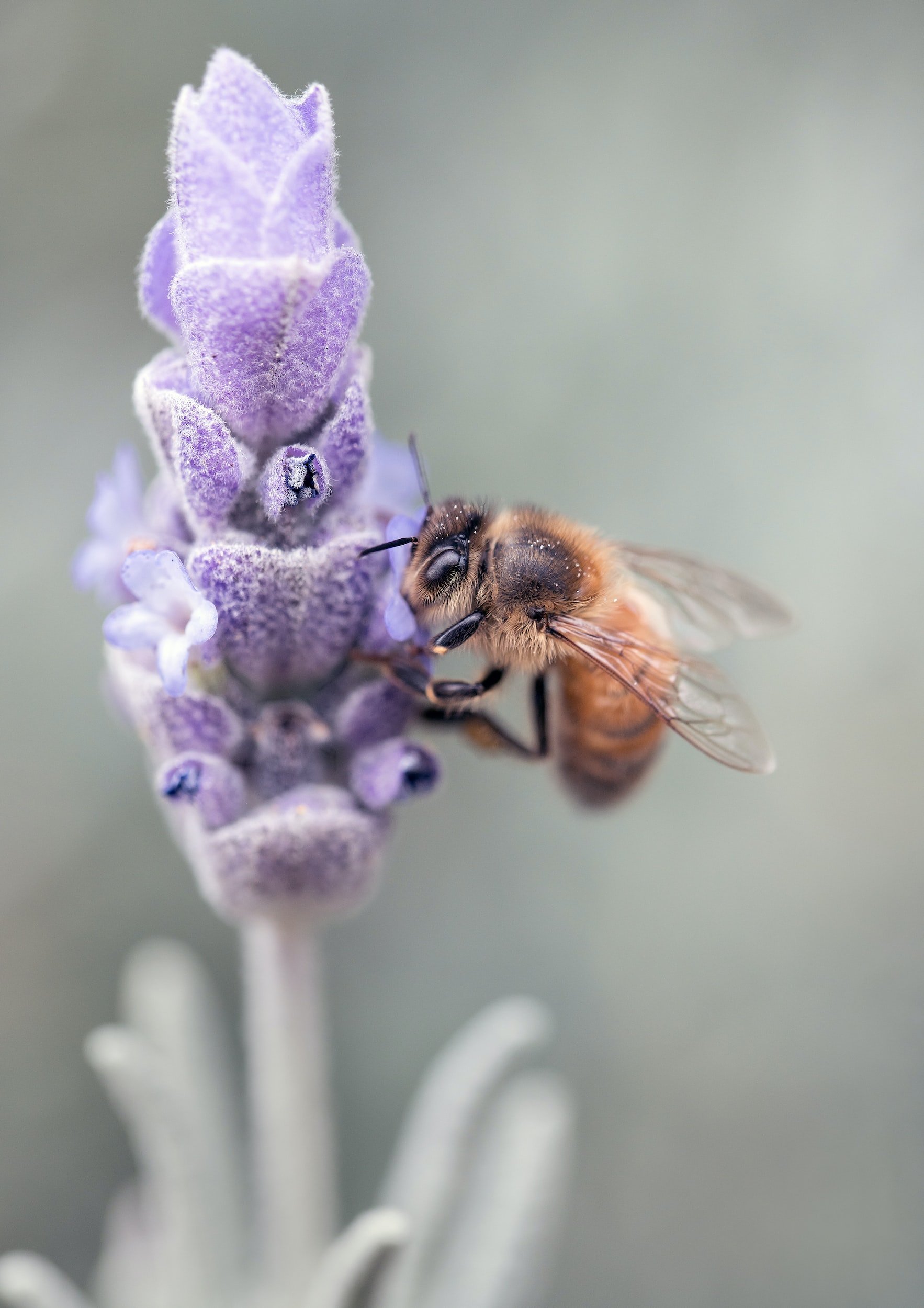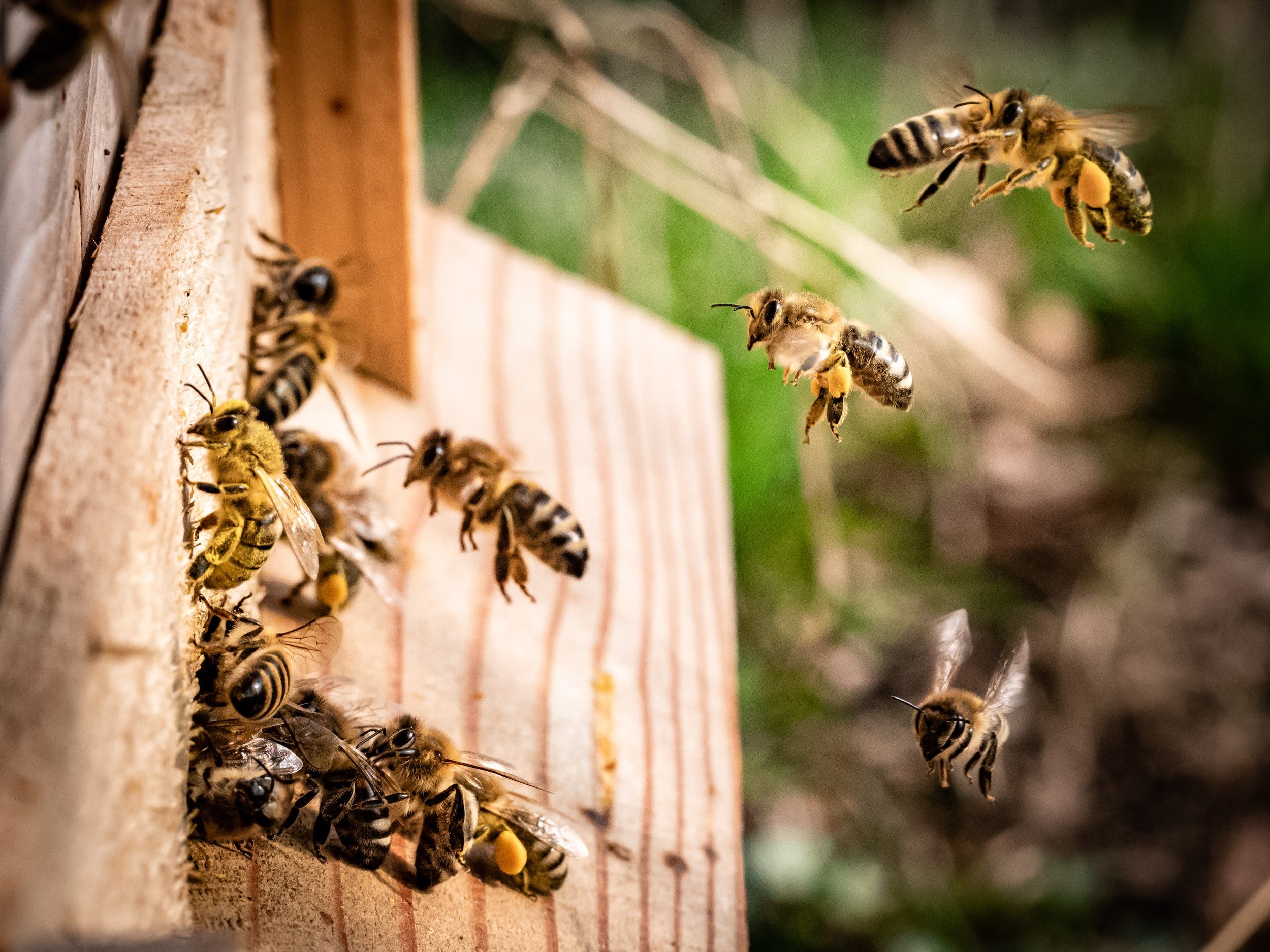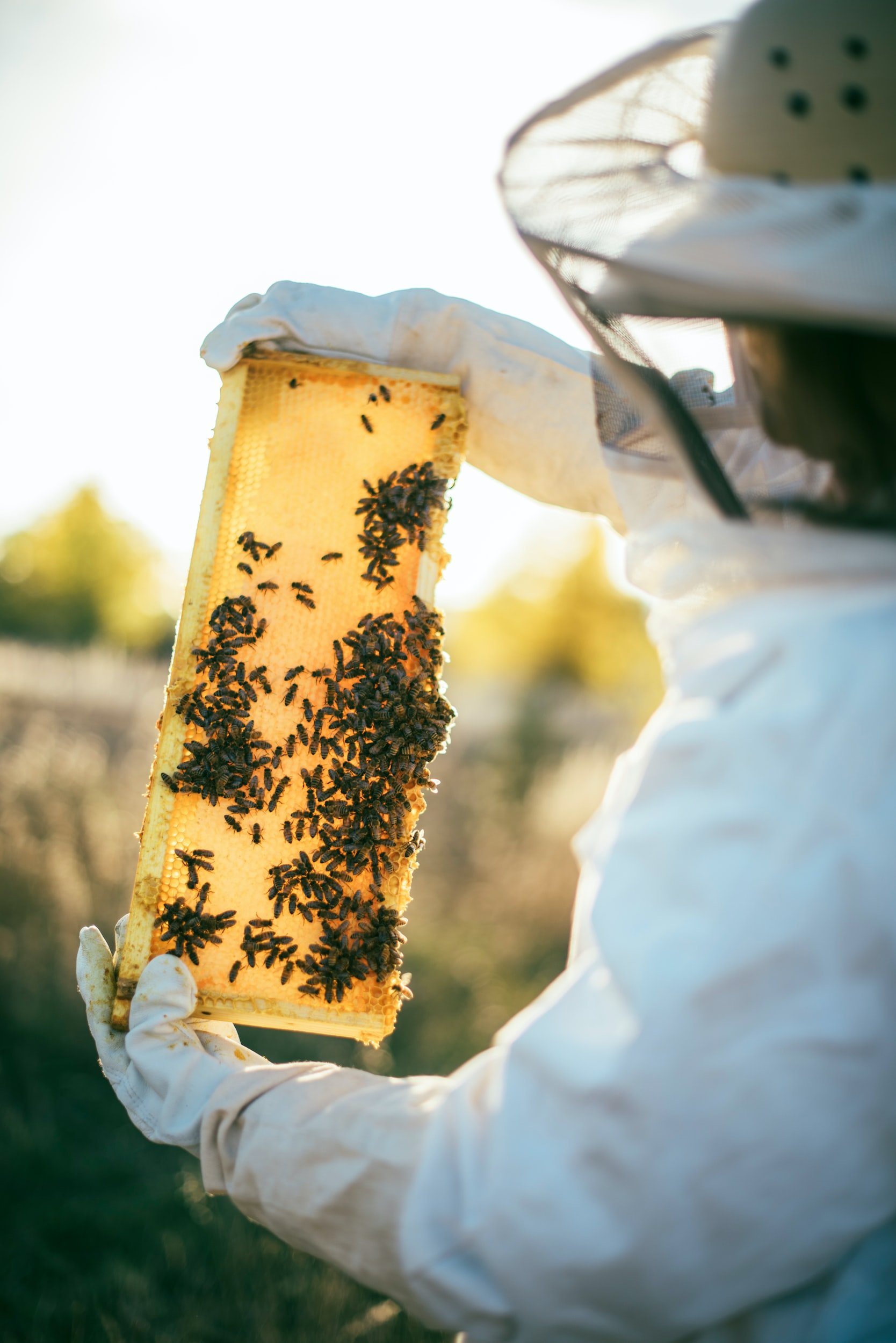Meet the Honeybee
Right around the time I first became interested in native plants, my husband was jumping headfirst into beekeeping. Through him, I’ve learned a bit about bees — and I’ve realized there is so much more to learn!
One interesting thing that I was surprised to learn is that honeybees aren’t native to North America!
So, I decided to dive into the history of the honeybee in North America. The introduction of the western honey bee, Apis mellifera, to North America is a fascinating and complex story that spans several centuries but below is a brief overview. I’d encourage you to learn more about these extremely charismatic creatures through some of the resources listed below. While they’re not native to North America, they’ve become deeply ingrained in the cultural and agricultural fabric of the US.
Honeybees are most likely originally native to Asia or Africa and have been domesticated by humans for thousands of years. The oldest evidence of humans actively interacting with bees goes back almost 9,000 years and was found in modern-day Turkey.
In the early 1600s, European colonists brought honeybees with them to North America, hoping to establish colonies and produce honey for their own use. The first attempts to introduce honeybees to North America were unsuccessful, as the bees did not adapt well to the new environment and climate. It wasn't until 1853 that a successful introduction was made when a beekeeper named Lorenzo Langstroth developed a new type of hive that allowed for easier management of the bees and their honey production. This development, along with other innovations in beekeeping technology, helped to establish the honeybee as a valuable and widespread agricultural resource in North America.
Over time, the honeybee has become an integral part of the North American ecosystem, providing essential pollination services to a wide variety of crops and wild plants. However, the introduction of honeybees has also had some negative effects, such as competition with native pollinators and the spread of diseases and parasites. Despite these challenges, the honeybee remains an important and beloved part of North American agriculture and culture.
SOURCES
"A Brief History of Honey Bees in North America." Bee Culture Magazine
"History of the Honey Bee in North America." The Honey Bee Conservancy
"Lorenzo Langstroth and the Hive That Changed Beekeeping." The Smithsonian Magazine
"Honey Bees: A History of Human Interaction." National Park Service
The Complex Demographic History and Evolutionary Origin of the Western Honey Bee, Apis Mellifera



